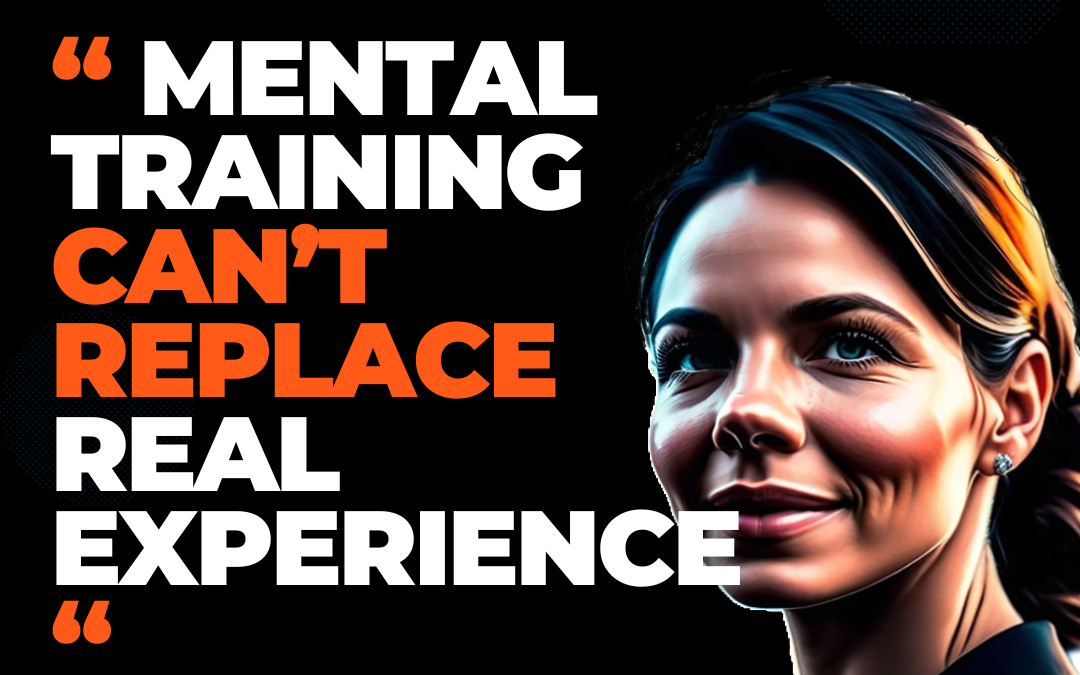Have you ever been bombarded by advertisements telling you that the secret to all your career and life’s successes lies in the magical power of visualization? You’ve probably come across countless gurus peddling courses that promise a shortcut to your dream life. The recipe? Just sit, visualize, and voila, success is yours, no effort required! Well, if you smell a rat, you’re absolutely right!
Don’t get me wrong. As a coach and fervent believer in self-development, I can confidently say that visualization does hold the power to change lives. But it’s not the magical, effortless route to success that some make it out to be. So let’s separate the wheat from the chaff and delve into what visualization is, and more importantly, what it isn’t.
Defining Visualization and Mental Training
Before we debunk some common myths, let’s clarify what we’re discussing. Mental training and visualization hinge on the concept of self-directed neuroplasticity in adults. This fascinating capability of our brains allows us to enhance our performance and generate innovative solutions. Neuroplasticity, in fact, is a crucial piece of the puzzle explaining why coaching is so effective.
Mental Training Can’t Replace Real Experience
One of the biggest misconceptions that I encounter is that our brain can’t distinguish between reality and imagination. While it’s true that there are parallels between real and imagined experiences, it’s crucial to understand that they’re not identical.
No amount of mental training and visualization can replace the real-world execution of cognitive or motor tasks. It can, however, enhance your learning speed and the stability of that learning over time. When you visualize something, your visual cortex does light up similarly to when you’re observing something. But the keyword here is ‘similarly’, not ‘identically’.
Guidelines for Effective Visualization
To make the most of this potent tool, here are a few principles to keep in mind:
- 1. Keep it Brief and Repetitive: Effective visualization requires short (up to 15 seconds) and repetitive (50-75 times per session, 2-7 times per week) sessions focusing on a high degree of accuracy rather than a multitude of steps.
- 2. Real-World Training is Essential: Visualization and real-world training must go hand in hand. Visualization alone cannot replace real-world experiences. You need prior experience, no matter how imperfect it is. This forms a bedrock of experience upon which your visualizations can build.
- 3. Naming Your Visualizations: Your brain is much better at manipulating concrete objects than abstract ones, so assign real-world labels to your visualizations that correspond to the real-world training and imaginative experiences you’re undergoing.
The Bottom Line
In conclusion, while visualization can be a powerful tool for enhancing performance, it is no substitute for real-world training. So don’t shy away from rolling up your sleeves and diving into the actual work, however imperfect your initial attempts might be. Visualization, coupled with practice, can bring you closer to your goals, one step at a time.
If you enjoyed this post, don’t forget to subscribe to my newsletter for exclusive insights and tips.
Sources :
1. Research article from BMC Medicine: “Best practice for motor imagery: a systematic literature review on motor imagery training elements in five different disciplines”
2. HubermanLab Poscast: “Science-Based Mental Training & Visualization for Improved Learning”


Recent Comments